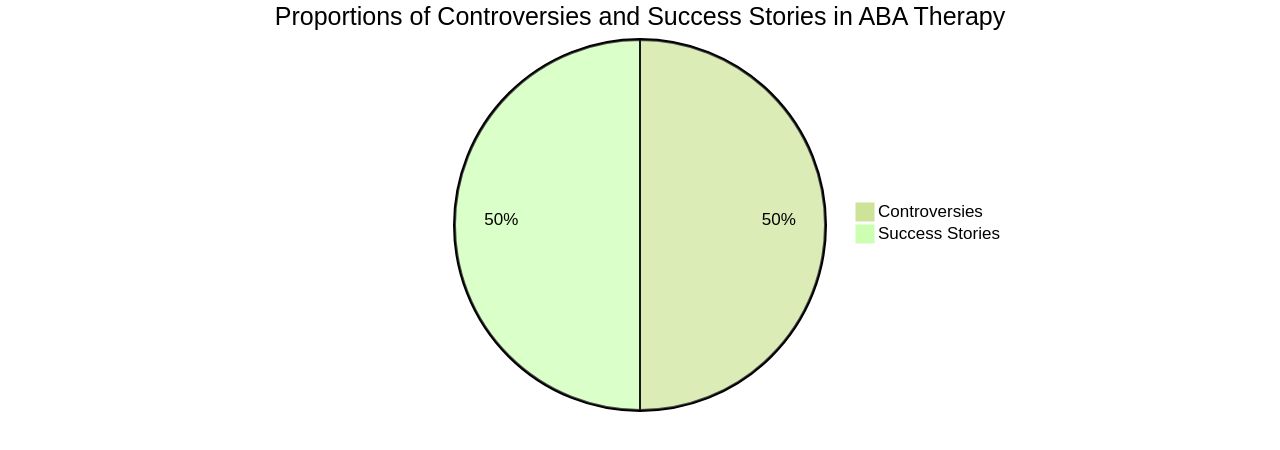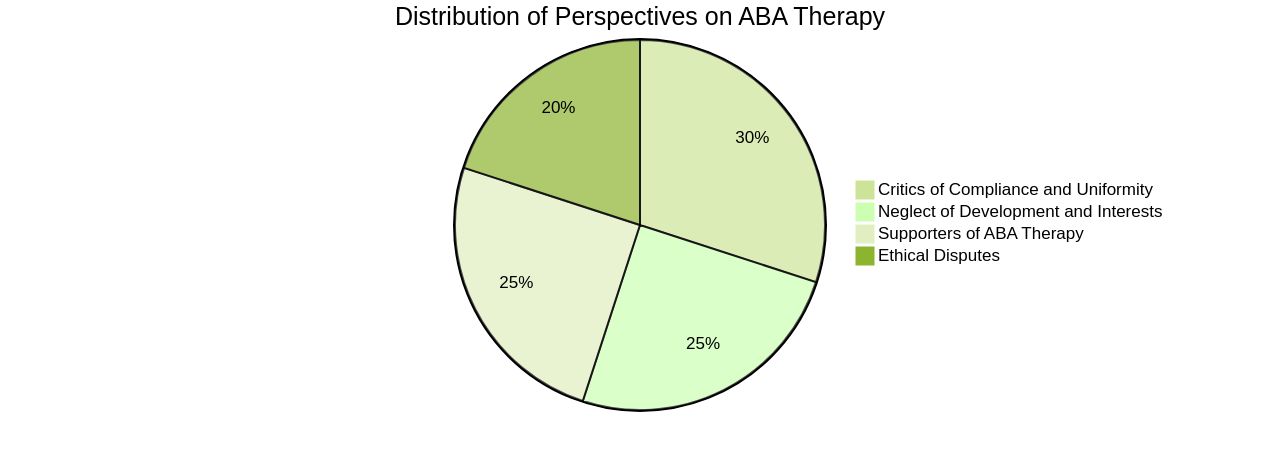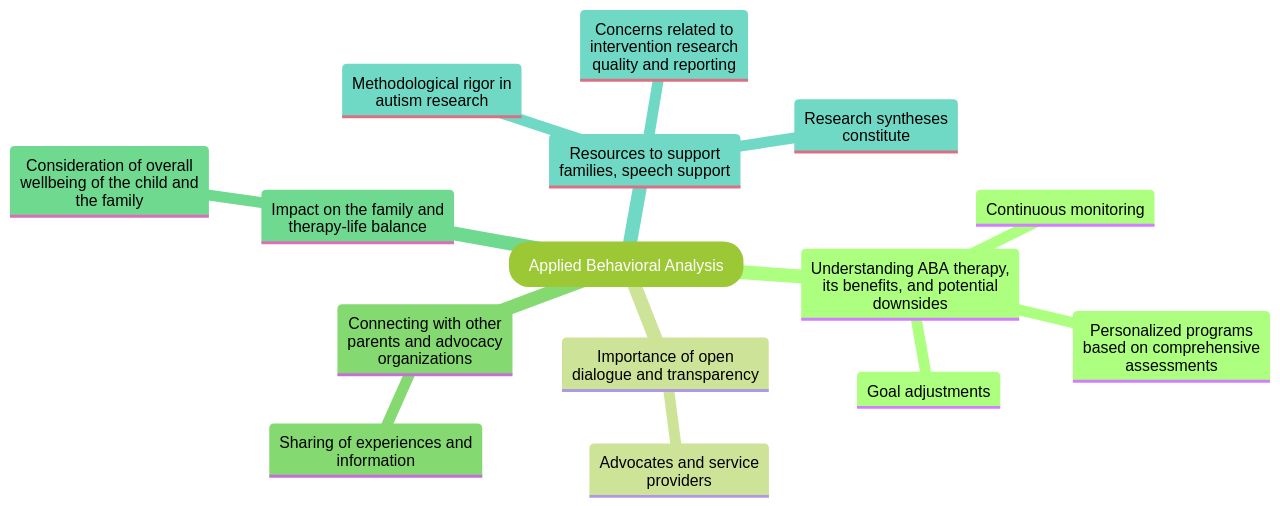Introduction
Applied Behavior Analysis (ABA) is a therapeutic intervention designed to enhance socially relevant behaviors in individuals with autism spectrum disorder (ASD) and attention deficit hyperactivity disorder (ADHD). It utilizes evidence-based techniques to teach new skills, minimize challenging behaviors, and encourage positive changes. However, the use of ABA therapy is not without controversy.
Some argue that it reprimands autistic children for harmless behaviors, while others question its effectiveness. Navigating the complexities of ABA services requires the guidance and advocacy of parent advocates who play a crucial role in ensuring their children receive optimal support. In this article, we will explore the controversies surrounding ABA therapy, the role of parent advocates, and strategies for navigating ABA services for children with autism and ADHD.
Understanding ABA Services
Applied Behavior Analysis (ABA) is a therapeutic intervention designed to enhance socially relevant behaviors in individuals with autism spectrum disorder (ASD) and attention deficit hyperactivity disorder (ADHD). It utilizes the principles of behavior analysis to simplify complex behaviors into manageable tasks.
By employing evidence-based techniques, ABA therapy teaches new skills, minimizes challenging behaviors, and encourages positive behavioral changes. However, the application of ABA therapy is not without its controversies.
For instance, some autism advocates argue that ABA therapy unfairly reprimands autistic children for behaviors that are harmless to themselves and society. An example of this is 'stimming' behaviors such as hand flapping or finger flicking that help autistic children manage anxiety or sensory overload.
These advocates suggest that society should adjust to these behaviors rather than attempt to eliminate them. Nonetheless, ABA therapy has its success stories.
For example, Easton, a young boy with autism, has been receiving ABA therapy for nearly two years and his progress has been significant. ABA therapy is a comprehensive process that begins with a thorough assessment by a Board Certified Behavior Analyst (BCBA).
This is followed by setting measurable goals for the child and consistently monitoring progress. The strategies are adjusted as necessary to ensure the child continues to benefit. ABA therapy, while effective for some, may not be the ideal solution for all. It requires a significant time commitment, often 30+ hours per week, which can impact family dynamics and limit social/community involvement. Furthermore, some children may respond better to non-drug treatments such as neurofeedback or non-invasive brain stimulation, which have shown potential in treating ADHD. While ABA therapy's efficacy is backed by numerous practitioners and parents, it's important to remember that each child is unique and what works for one might not work for another. Therefore, it's crucial to regularly review the child's progress and adjust the treatment plan accordingly to ensure optimal results.

The Controversy Surrounding ABA Services
Discussions about Applied Behavior Analysis (ABA) services are often charged with varying perspectives. Critics suggest that ABA therapy might emphasize too much on compliance and uniformity, potentially leading to the suppression of the child's individuality and overlooking their emotional health. They also argue that the use of behavior modification techniques like reinforcement and punishment could be ethically disputable.
Furthermore, the debate centers around ABA therapy being the primary intervention for autism, with some expressing concern that it could overshadow other crucial aspects of a child's development and neglect their unique strengths and interests. However, successful ABA programs are built on several pillars including individual assessment, goal setting, consistent monitoring, and intake. Each child with autism is unique, and their program should reflect that uniqueness.
Nonetheless, it's crucial to strike a balance in therapy and life. Excessive therapy hours could impact the family financially, intrude privacy, limit social/community involvement, and disrupt parent-sibling and marital/couple relationships. Furthermore, the effectiveness of ABA therapy is still under scrutiny, with few studies evaluating autistic children's negative experiences of the therapy, casting doubt on its status as an authoritative treatment.
Despite the controversy, some parents and practitioners stand by the therapy, citing personal success stories. However, the lack of comprehensive scientific evaluation leaves many questions unanswered about the effectiveness of ABA therapy and whether it works for everyone. Hence, it's essential to consider all these factors when navigating support services for children with autism.

The Role of Parent Advocates
Navigating the labyrinth of ABA services is a critical responsibility of parent advocates. They are the champions of their children's rights, their well-being, and their access to the most fitting services.
They are often at the forefront of discussions and decisions about ABA therapy, ensuring their children receive optimal support and interventions. They work hand-in-hand with professionals, educators, and other stakeholders to guarantee ABA therapy is delivered in a manner that respects their child's individuality and promotes their overall development.
For instance, the program created by Judge Sunny Bailey in 2018 for at-risk youth with autism exemplifies this collaborative approach. This program brings together social workers, psychologists, attorneys, and parents to support children, emphasizing that addressing autism is a 24/7 commitment.
Moreover, parent advocates play a key role in shaping policies and regulations that affect the wellbeing of their children, as seen in the U.S. Administration for Children and Families' new rule. This rule encourages child welfare agencies to develop different standards for kinship caregivers based on years of research, including on kin-first culture by the ABA Center on Children and the Law.
The ABA journey begins with a comprehensive assessment by a Board Certified Behavior Analyst (BCBA). This is followed by setting specific, measurable goals for the child and consistently monitoring progress.
Adjustments are made to strategies to ensure the child continues to benefit. Parent advocates are also known for their resilience and determination. They rally for their children's rights, as seen in Indiana, where parents protested against the state's decision to cut reimbursement rates for their kids’ therapy centers. Their advocacy has led to significant advancements in the accessibility and quality of ABA services. However, it's not just about the behavior therapy. Parent advocates understand that a holistic approach is needed to address the unique needs of their children. As one advocate stated, 'No one should dispute the evidence and power of ABA... but it's just not sufficient for all that a child and family needs.'

Strategies for Parent Advocates
Navigating the terrain of Applied Behavioral Analysis (ABA) services for children with autism and ADHD requires a multifaceted approach. First, knowledge is power.
Understanding ABA therapy, its benefits, and potential downsides is crucial. This includes recognizing that every child with autism is unique, necessitating personalized programs based on comprehensive assessments by Board Certified Behavior Analysts (BCBAs).
Continuous monitoring and goal adjustments ensure that the child's needs are being met effectively. The importance of open dialogue cannot be overstated.
Advocates should feel comfortable voicing their concerns and seeking clarifications from service providers. This transparency is essential in ensuring the child's progress and adjusting strategies as needed.
Notably, the Martin's story demonstrates the impact of ABA services, where early interventions have helped their son, Easton, lead a life similar to his peers. Moreover, parent advocates should not operate in isolation.
Connecting with other parents and advocacy organizations can provide a platform for sharing experiences and information. A recent example is the creation of a guide by ASAN to help families evaluate practitioners and self-advocate with insurance providers. The unity among parents can lead to positive changes, as demonstrated by the recent enactment of Senate Bill 805 in California, expanding treatment options for children with autism. Finally, remember that therapy-life balance is crucial. ABA programs can be intensive and may pose challenges such as financial strain, privacy intrusion, and reduced family time. Therefore, it's essential to consider the overall impact on the family while planning the child's treatment. After all, advocating for children with autism and ADHD is not just about securing services; it's about ensuring their wellbeing and enabling them to navigate the world confidently.

Conclusion
In conclusion, navigating the complexities of ABA therapy for children with autism and ADHD requires the guidance and advocacy of parent advocates. These individuals play a crucial role in ensuring that their children receive optimal support and interventions.
They work hand-in-hand with professionals, educators, and other stakeholders to guarantee that ABA therapy is delivered in a manner that respects their child's individuality and promotes their overall development. While ABA therapy has its controversies, with concerns raised about reprimanding harmless behaviors and its effectiveness, it also has success stories where significant progress has been made.
Each child is unique, and what works for one might not work for another, so it's important to regularly review the child's progress and adjust the treatment plan accordingly. Parent advocates are resilient and determined, advocating for their children's rights and rallying for advancements in the accessibility and quality of ABA services.
They also play a role in shaping policies and regulations that affect the well-being of their children. Strategies for parent advocates navigating ABA services include gaining knowledge about ABA therapy, engaging in open dialogue with service providers, connecting with other parents and advocacy organizations for support, and considering the therapy-life balance to ensure the overall well-being of the family. In conclusion, as parent advocates, your role is vital in ensuring that your children receive the best possible support. By being knowledgeable, proactive, and connected within the community, you can navigate the challenges of ABA therapy while prioritizing your child's well-being and empowering them to thrive.




